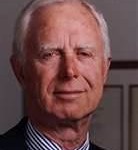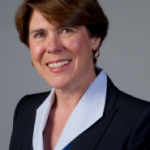The recent heated discussion about whether the equity markets are rigged should be a major concern to all investors, especially those in retirement, since it fundamentally affects their quality of life and collective financial futures.

Any society which has its fundamental retirement system under constant attack by conservatives concerned about its privatization, higher fees, expenses and more volatile returns, should be very concerned about whether their uncertain future investment returns will be eroded by behind-the-scenes and secretive schemes designed to separate hundreds of millions of average, unsophisticated investors from earning a higher rate of return.
Battling for these incremental few dollars over time is what good investing is all about. These incremental returns have become critically important to all investors, especially retirees, in light of the trillions in lost wealth, primarily in housing values, that occurred during the recent 2008 Great Recession.
So what makes the current argument started by Michael Lewis and his “Flash Boys” book about the markets being rigged raises valid issues about high-tech computer market access and its inherent unfair advantage over less sophisticated, long-term investors.
But Lewis’ argument, while correct, is misguided.
The reason is financial markets, including stocks, futures and insurance, are unquestionably rigged, but more from the top than the bottom. That is to say, financial services regulatory agencies and the people who work in them in official capacities as commissioners, chair people, and in key departments, are either fundamentally pro-industry (and anti-investor) or so disproportionately influenced by financial services industry lobbyists that they are either compliant or unwitting pawns to derailing the few pro-investor initiatives which have risen to the national level in the past four decades.
A quick look at past SEC commissions and chairman is instructive. While debatable, I believe individual investors have not had an advocate at the SEC since Arthur Levitt served as chairman from 1993 to 2001.

Since then, individual investors have suffered through SEC chairmen who ranged from hacks (Richard Breeden) to shysters (Harvey Pitt) to political appointees (some of whom were well-meaning, but ineffective), who simply were ground down by professional lobbyists and powerful financial services forces seeking to protect their own wealth.
This is compounded by a revolving door of SEC commissioners, most commonly securities lawyers, who take a leave of absence from their corporate firms to serve a term and then return to their corporate practices with new knowledge about the SEC’s weaknesses and how to manipulate it on behalf of their financial services corporate clients
This helps explain why throughout the post-1987 SEC, individual investors have not seen advances in regulatory reform which would put more money in their pockets and less into the hands of professional money managers, salespeople, and industry executives. This is not surprising since that is the way the SEC has evolved since it was created in 1934.
The Fiduciary Standard Example
One of the better examples of SEC inaction is its anti-investor behavior when handling the adoption of a fiduciary standard regulation that would apply to retail investors and brokers. The fiduciary standard would essentially level the informational and behavioral fields between brokers and their more naïve investor clients, thus giving investors more opportunities to evaluate what they were buying.
In its strongest form, the fiduciary standard would push brokers to better advance their customers’ interests rather than their own. Naively, the vast majority of investors now believe this is the case, but they also have no idea about the power of revenue sharing and 12b-1 fees and even that they exist. In short, adopting a fiduciary standard would essentially change the way financial services are sold in the U.S. and derail a trillion dollar industry.
So it should be no surprise that in 2012, the SEC delivered a report to Congress recommending the adoption of a universal fiduciary standard regulation that would apply to retail advisers and brokers. This long-overdue rule was not even considered during 2012.
The average person would think a year of debate is enough time to consider the fiduciary question, especially since the ideas has been floated at the SEC for years. But in a January 12, 2012 letter to Rep. Scott Garrett, (R-N.J.), chairman of the House Financial Services Capital Markets Subcommittee, then-SEC Chairwoman Mary Schapiro (a penultimate financial regulatory career bureaucrat) said the agency needed more time to conduct an economic analysis of the impact of a the “ standard-of-care regulation.”
In her letter, Schapiro said the “SEC staff, including (Division of Risk, Strategy and Financial Innovation) economists, are drafting a public request for information to obtain data specific to the provision of retail financial advice and the regulatory alternatives.” If this were not such as serious matter, individual investors would see the Orwellian humor in this this division being associated with “Financial Innovation.”
According to Barbara Roper, director of investor protection at the Consumer Federation of America, enacting

the fiduciary-duty rule simply the depended on whether President Barak Obama got re-elected.
The reason at the time was that if a Republican was elected in November 2012, the SEC would move from a 3-2 Democratic majority to a 3-2 Republican majority, delaying the implementation of any unfinished Dodd-Frank provisions.
Dodd-Frank was the controversial financial services reform legislation which was constantly under attack by Republicans and the financial services industry. To derail this pro-investor initiative that was needed after the abuses of financial firms that led to the 2008 recession and the undetected Bernard Madoff Ponzi scheme, the GOP-run House Appropriations Committee cut the 2012 budget of the Securities and Exchange Commission by $222.5 million (to $1.19 billion), even though the SEC was given major new responsibilities under Dodd-Frank.
By cutting the SEC’s budget, this GOP committee worked against the interests of individual investors, while simultaneously benefiting Wall Street firms. The reason: The SEC gets its operating money by fees charged to the financial firms it regulates, including the big firms that were “too big to fail.” Cutting the SEC’s budget by $136 million meant the firms paid less in fees to support the SEC during fiscal year 2012, James B. Stewart of the New York Times, wrote.
Meanwhile, by the end of 2012, the SEC announced it needed more time to conduct an economic analysis. To any concerned and aware investor, this showed the SEC was never serious or lacked the regulatory will to advance this long-overdue, pro-investor rule.
The Great Fee Debate
Another great example of financial regulatory inaction occurred in the recent major effort to disclose and reduce fees in retirement plans, including 401(k) fees. As presented in my book (How 401(k) Fees Erode Wealth and How Investors Can Protect Themselves) I traced the timeline of this simple fee disclosure provision back to February 2005 when the issue of excessive fees and expenses inside of 401(k)s was raised in an ERISA newsletter.
Why are fees become so important? First, the DOL has identified 17 distinct fees which can be charged to investors buying a mutual fund. Second, the simple reason is money. Every day, U.S. investors pay $164 million in fees daily to the financial services industry. Worse, most investors never even know they are paying these fees or what they are getting in return. Then due to the falling cost of technology, many of these fees should be reduced, but since no investors complain, the fees are never reduced in light of any technological advances and their resulting cost savings.
The debate started and it was not until July 2012 when the Department of Labor, under intense pressure to kill or seriously revise the rule, finally did the honorable thing and passed Rule 408(b)(2), an obscure title for a bill which is one of the most pro-investor rules ever passed by a regulatory agency. Studies since then have shown that lower fees are in fact benefiting all investors and putting more money into their accounts. Not surprisingly, this pro-investor rule did not come from the SEC or the Commodities Futures Trading Commission (CFTC), which have both become captured by financial services industry lobbyists.
Financial Services: the Biggest Lobby in Washington
Another reason why the Lewis argument about market rigging is right for the wrong reason is that it does not describe the enormous financial services lobby that has effectively captured almost all financial services regulation at the state and federal levels. Again, this shows market capture, or market rigging, from the top-down not the bottom-up.
To keep this in perspective, here are some numbers cited in my book. From 1998 to 2008, the financial services industry spent $1.7 billion on campaign contributions and $3.4 billion on lobbying expenses. The securities industry alone spent $500 million on campaign contributions and $600 million on lobbying. When these contributions are compared to other industries during the period starting in 1989, contributions from the financial services industry alone are greater than the combined contributions of the energy, health care, defense and telecommunications industries.
In 2013, the Investment Company Institute (ICI) the main lobbying group for the mutual fund industry, was the largest spender in the Securities and Investment category from the Open Secrets database.
The ICI spent $5.44 million, more than Goldman Sachs and Morgan Stanley, to advance the political and regulatory interests of mutual fund companies. In terms of lobbying power, in 2011, the ICI had about $50 million in lobbying funds and employed five full-time lobbyists, 30 part-time and 75 outside lobbyists to get their pro-industry positions across to regulators and elected officials. Despite this, the ICI publically says they are pro-shareholder, but their record shows otherwise. Based on history, we can presume that most of this money was not spent on pro-individual investor initiatives.
Revisiting Lewis’ Market Rigging Charge
Charges of market rigging are serious and deserve investigation since they undermine the financial security, including the retirements, of hundreds of millions of Americans. It also undermines faith in the financial system, which after the 2008 recession and the lack of prison time for criminal wrongdoing, is certainly not unjustified.
But it certainly is much easier to make a case that the financial system is anti-individual investor by examining the regulators and their actions over the past 30 years, as opposed to the important, but less pervasive impact of flash trading by high-tech market scalpers unless they are preying on unknowing individual investors. If that is the case, it is the job of fund and investment companies, and regulators to protect unsuspecting, naive and trusting customers.
But if the flash traders have abused unsuspecting investors, while mutual fund companies sat on their hands, Michael Lewis has uncovered one of the largest rip-offs in financial history.











